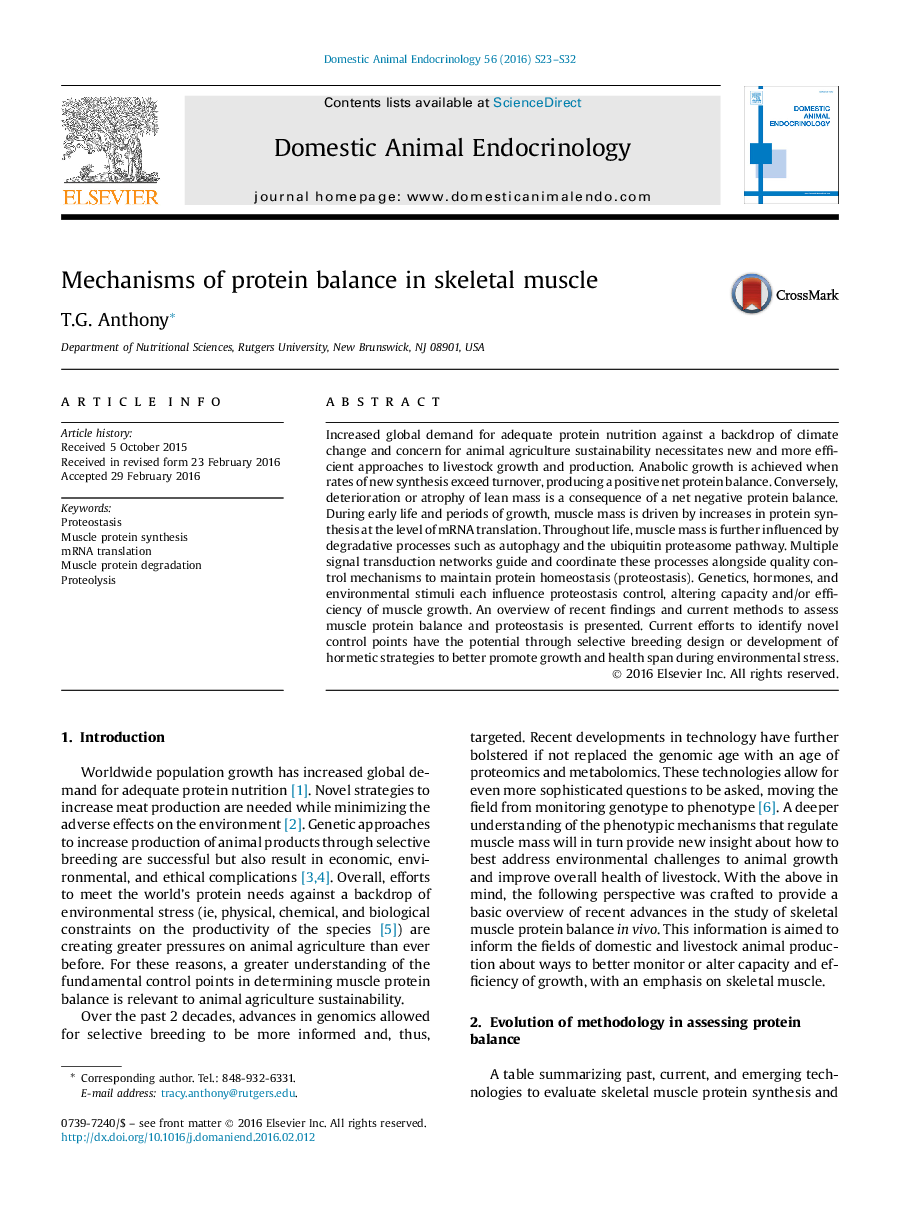| Article ID | Journal | Published Year | Pages | File Type |
|---|---|---|---|---|
| 10961140 | Domestic Animal Endocrinology | 2016 | 10 Pages |
Abstract
Increased global demand for adequate protein nutrition against a backdrop of climate change and concern for animal agriculture sustainability necessitates new and more efficient approaches to livestock growth and production. Anabolic growth is achieved when rates of new synthesis exceed turnover, producing a positive net protein balance. Conversely, deterioration or atrophy of lean mass is a consequence of a net negative protein balance. During early life and periods of growth, muscle mass is driven by increases in protein synthesis at the level of mRNA translation. Throughout life, muscle mass is further influenced by degradative processes such as autophagy and the ubiquitin proteasome pathway. Multiple signal transduction networks guide and coordinate these processes alongside quality control mechanisms to maintain protein homeostasis (proteostasis). Genetics, hormones, and environmental stimuli each influence proteostasis control, altering capacity and/or efficiency of muscle growth. An overview of recent findings and current methods to assess muscle protein balance and proteostasis is presented. Current efforts to identify novel control points have the potential through selective breeding design or development of hormetic strategies to better promote growth and health span during environmental stress.
Related Topics
Life Sciences
Agricultural and Biological Sciences
Animal Science and Zoology
Authors
T.G. Anthony,
